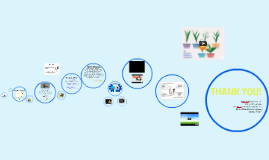

Transcript: Compliance starts with understanding, and understanding starts with cultural competence The whole process begins by acknowledging the “people” we work with. Why Cultural Competency? Diversity is the mosaic of people who bring a variety of backgrounds, styles, perspectives, values, abilities and beliefs as assets to the groups and organizations to which they belong Relatively new concept No single definition Explains differences between people A generic concept with wide boundaries Race Ethnicity Socio-economic Language Education level Customs Beliefs 1. Concrete Tangible Food, Music, Games, Clothes, etc. 2. Behavioral Social Roles Gender roles, Family Structure, Language 3. Symbolic Values/Beliefs Customs, Value System, Worldview Cultural Knowledge Awareness, familiarization, and sensitivity with selected cultural characteristics, history, values, belief systems, and behaviors of the members of another cultural/ethnic group Cultural knowledge implies little more than knowledge of the concrete. "A fish only discovers its need for water when it is no longer in it. Our own culture is like water for the fish. It sustains us. We live and breathe through it" Tayrin Saldivar-Hernandez Bilingual Coordinator PFH/Dayspring Community Services tayrinsaldivar@dayspringao.org (405)237-5871 "Am I Cultural Aware or Cultural Competent?" Tayrin Saldivar-Hernandez, M.S. CRC, LPC. August ,2015 Stephanie Quappe and Giovanna Cantatore Three Levels of Culture Diversity THANK YOU! Transition
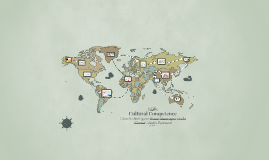
Transcript: Types of Intervention to improve cultural competency in health care are: U.S. Demographics Cultural Competence in Health Care What is Cultural Competence? Diversity Pledge Claudia Rodriguez-Evette Marasigan-Anila Khanal-Gladys Espinoza Cultural Competence Cultural Awareness is being cognizant, observant and conscious of similarities and differences among and between cultural groups (Goode, 2001, revised 2006) Cultural Competence is a set of congruent behaviors, attitudes, and policies that come together in a system, agency or among professionals and enable that system, agency or those professions to work effectively in cross- cultural situations (Cross et al 1989) Almost 35 million U.S residents are foreign born Almost 55 million people (19.7% of the U.S. population) speak a language other than English at home More than 24 million people (8.7% of the U.S. population) speak Englishless than "very well." Integrate components of cultural competence into many different aspects of the educational curriculum- seminars, lectures, workshops- so the effort is not viewed as an added burden to an already busy resident schedule. Integrating cultural competence with clinical/biomedical education also prepares physicians on all levels Modifying hospital culture to keep up with the changing demographics of the community, preforming public relations, securing federal funding and foundation grants, and fulfilling regulatory requirements Secure faculty time, teaching time, and funding for cultural competence curriculum Culture- the customary beliefs, social forms, and material traits of a racial, religious, or social group Competence- the quality or state of being functionally adequate or of having sufficient knowledge judgement, skill, or strength Cultural Competence- ? There is no one true definition for Cultural Competence It is an on-going, evolving definition White Memorial Medical Center Family Practice Residency Program Without an understanding of a culture's impact on concepts surrounding health and illness a health care professional or organization may havedifficulty providing effective care and services to diverse consumer populations. Ways to Improve Cultural Competence in Health Care cont. Culture Model of Cultural Competent Care Began in 1988 Emphasize the importance of cultural issue both inside and outside of the medical encounter Kaiser Permanente, Aetna, and BlueCross BlueShield of Florida, have developed initiatives in cultural competence. Kaiser Permanente- educational monographs in cultural competence Aetna- began to collect race and ethnicity data on its members, developed culturally competent disease management programs, and mandated cultural competence training for its internal medical doctors, nurses and case managers BlueCross BlueShield of Florida- initiated internal diversity training and cultural competence education for providers Cultural Awareness vs. Cultural Competence The curriculum required, begins with a month-long orientation to inroduce family medicine residents to the community. The doctors spend nearly 30 hours on issues related to cultural competence, during which time they learn about traditional healers and community oriented primary care and hold small-group discussions, readings and self-reflective exercises. Throughout the year, issues related to culturaompetence are integrated into the standard teaching curriculum and codified in a manual A yearly faculty development retreat helps to integrate cultural competence into all of the teaching at White Memorial I pledge to contribute to the creation of our campus as an environment which respects and supports cultural, ethnic, and racial diversity. I affirm my belief in the value and importance of this diversity; and I pledge to foster, communicate, and promote mutual respects and peaceful coexistence among all members of this university community. training/workshops for health practitioners culturally specific education or programs for patient interpreter services peer education patient navigators and exchange programs Reducing health disparities and achieving equitable health care remains an important goal for the U.S. health care system. Cultural Awareness & Health Care White Memorial Medical Center Family Practice Residency Program, Los Angeles, CA sets the stage gives meaning to pain, suffering and death creates people's expectations of health care providers and their enactment of sick role behavior defines the behavior of family and caretakers
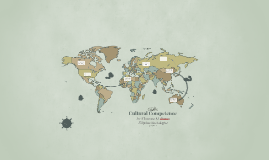
Transcript: Understanding the cultures of the youth we serve requires more than words and good intentions. The journey toward cultural competence requires the willingness to experience, learn from those experiences, and act. “In a world that grows smaller every year, it is easy to offend others by being ourselves – gestures that we take as innocent may be seen by someone else as deeply insulting.. in an age of global business dealings, the need to cultivate cultural sensitivity” One cannot learn about a people or culture exclusively through books, movies, and classes. 3) Positive Change What is Cultural Competence? 1) Self-knowledge (Axtell, 2004) Building Cultural Competence "While all animals are capable of complex behavior, only humanity depends on symbolic activity. This is the special power that underlies our autonomy as the only creatures who live according to meanings we set for ourselves. Thus, symbols convert our animal species into humanity, in the process transforming social behavior into true civilization." Dr. Clarence M. Batan Filipino Sociologist Cultural Competence Why do cultures differ? 1) History 2) Ecology 3) Technology 4) Biology 5) Institutional and Structural Networks 6) Interpersonal Communication Deep thought is similar to the iceberg concept in that the thoughtful analysis and understanding of the idea goes beyond the superficial level to that of introspection and self-understanding. (Hanley, 1999) 2) Experience Cultural competence as the ability to work effectively across cultures and as an approach to learning, communicating and working respectfully with people from cultures different from one’s own. (Olsen et al, 2006) - J.J. Macionis, N.V. Benokraitis & B. Ravelli on Leslie White's Symbol: The Basic Element of Culture Cultural competence does not exist without demonstrated positive change both in the educational/clinical setting and the real-life environment in which the student or client must function.

Transcript: Mutual respect means “honoring each other’s right to represent moral worldviews in public and avoiding demonizing one another. It requires that, even if I think you are tragically mistaken, I honor your right to participate in the American enterprise of public moral conversation.” Chernotsky, H.I., Hobbs, H.H., (2015) Crossing Borders: International Studies for the 21st Century (2nd ed.).London, UK: Sage Publications. Civil-discourse dictionary definition | civil-discourse defined. (n.d.). Retrieved December 2, 2015, from http://www.yourdictionary.com/civil-discourse Cultural ompetence. (n.d.) Medical Dictionary. (2009). Retrieved December 2 2015 from http://medical-dictionary.thefreedictionary.com/cultural+competence Facebook logo. (n.d.). Retrieved December 2, 2015, from https://www.facebook.com/thisisinsider/videos/1492105597763500/ Op-Ed, P. (n.d.). What exactly is civil discourse today? Retrieved December 2, 2015, from http://www.pennlive.com/editorials/index.ssf/2011/01/what_exactly_is_civil_discours.html What is Voluntourism? (2013, February 25). Retrieved December 2, 2015, from https://volunteertourismviews.wordpress.com/2013/02/25/what-is-voluntourism/ Why Cultural Competence? (n.d.). Retrieved December 2, 2015, from http://www.nea.org/home/39783.htm Global Citizens: Individuals who perceive themselves as members of a global community. Such people are aware of the wider world, respect and value diversity, and are willing to act to make the world a more equitable and sustainable place. (Crossing Borders pg. 17) Civil Discourse CULTURE An engagement in conversation intended to enhance understanding. James Calvin Davis—professor of religion at Middlebury College-- defines civility as “the exercise of patience, integrity, humility and mutual respect in civil conversation, even [or especially] with those with whom we disagree.” Why Care? Cultural Competence This-cultural competence-is something that impacts us on a daily basis as we live in an increasingly global and diverse community not only at VCU, but in the communities surrounding VCU that we interact with on a regular day basis. Relevant to careers and the workplace, as well as daily interactions with others. Education, Healthcare, and social work are main areas that focus on cultural competence. We must learn patience and “hear our neighbor’s position in his or her own terms.” In short, we have to listen to those who disagree with us. Humility requires that “we enter every public conversation open to the possibility that we could change our minds.” References SET OF DISTINCITIVE SPIRITUAL, MATERIAL, INTELLECTUAL, AND EMOTIIONAL FEATURES OF SOCIETY OR A SOCIAL GROUP THAT ENCOMPASSES, NOT ONLY ART AND LITERATURE, BUT LIFESTYLES, WAYS OF LIVING TOGETHER, VALUE SYSTEMS, TRADITIONS, AND BELIEFS-AS DEFINED BY UNESCO-UNITED NATIONS EDUCATIONAL SCIENTIFIC AND CULTURAL ORGANIZATIONS.(Crossing Border pg. 213) Relavance Do's of Civil Discourse Cultural competence is having an awareness of one’s own cultural identity and views about difference, and the ability to learn and build on the varying cultural and community norms of students and their families. It is the ability to understand that within group differences that make each student unique, while celebrating the between-group variations that make our country a tapestry. This understanding informs and expands teaching practices in the culturally competent educator’s classroom. Do's of Civil Discourse Cont. Civil Discourse
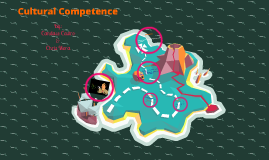
Transcript: Cultural Competence By: Candace Castro & Chris Mora When students pick groups in their classroom, do they pick by gender/ethnicity? Definition: Involved Hispanic’s, Filipino’s, African American's Gender Mixed When picking team members, I typically try to make sure we have a racial mix. Do you feel comfortable know that someone in the group is the same ethnicity as you? Results To interact effectively with people of different cultures and backgrounds If groups were equally balanced If students noticed how they selected their partners. Students didn't select their partner's by their gender or ethnicity. they selected by how good of a partner they would be and help the group out. Topic Survey
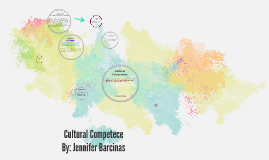
Transcript: Cultural Competence is having the awareness and knowledge of other cultures that are outside of one's and understanding and having the ability to work accordingly to the different cultures. By: Jennifer Barcinas For this creative project i chose to focus on the Filipino cultural group. I chose this group because Guam has a heavy population of the Filipino culture. Also based on personal experience and observations I believe Filipinos are one of the most judged and misunderstood cultures. I will grow my my understanding of their culture by interview. Not so much because I went to a school in a very diverse area, however; sometimes my classmates would make fun of my accent or would get irritated with me because they sometimes they couldn't understand me. Did you feel "different" or set apart from your classmates in school because of your different culture? Interview Questions By: Rex Hernandez How do you feel living in a place where you are a minority? By: Rex Hernandez Interview Reflection What are you most proud of your culture? By: Rex Hernandez What traditions are specific to your culture? Cont. Interview Questions What I have learned from this interview with Rex Hernandez, is that he is not looked at as a minority here, and he is treated with respect from his community/peers. He knows who he is as a person and he is content with that. He doesn't allow his culture define who he is, despite what others may think,feel or say about him. Filipino people are rich in customs and traditions. Many of these are in connection with family, life such as dating, marriage and death. These traditions made Filipinos more family oriented. They take care of their families. Most of these activites are gathering together which made each one so attached to the family. The Filipino values or "Utang na loob" is a way to reciprocate a favor. It's like a give and take. Our traditions has molded majority of Filipinos to value more their honor than wealth. Cultural Competece By: Jennifer Barcinas I don't ever think about it in that way, sometimes I feel like I'm still in the P.I. because they're so many of us living here. And because of that I rarely feel like an outcast. The people here are very welcoming, but I can admit to some encounters where I was made differently because of my culture, I try not to let it get to me. Cultural Competence Success in our culture is not about fame and money, success in our culture is more about family ties and your dignity as a person. Cont. Interview Question By: Rex Hernandez Our culture is very unified. I'm not saying that other cultures are not, but when something bad happens we set aside our differences and stand by one another. In your culture what is your definition of success? Purpose Statement
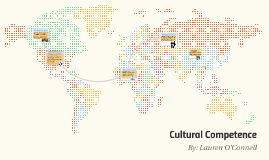
Transcript: Stereotypes: -good at math -are chinese -can do karate -Normally when people live together they are married, so it is a little different from the cultural norm, but not by a lot -Domestic partner means that they aren't married, but they do live together Ethnicity: Asian American - Modern/ allopathic health care is the treatment of diseases and illnesses by using remedies - Examples: acute care, chronic care, rehabilitation, psychiatric/ mental health, and community/ public health By: Lauren O'Connell Assumptions: Assuming that they speak Chinese and that they speak very quietly Challenges: It would be difficult if this patient didn't speak English, because then I would need to get a translator. It would also be difficult if this person didn't want to be touched, because then I would have to find different ways to treat the patient. Health Care Profession: Physical Therapist Basic Beliefs- There is only one God (monotheism), there can be no other Torah (sacred book), the dead will be resurrected, and the Messiah will come Beliefs affect ability to receive healthcare- not many things affect their ability to receive healthcare, because they believe that everything should be done in order to make a patient healthy - One thing that would need to be asked is if they have any dietary restrictions, because some follow food regulations called Kashrut - Another thing the healthcare provider would need to do is respect their modesty Heath Concern/Illness: Tendonitis Cultural Competence Common heath concerns- cancer, heart disease, stroke, unintentional injuries, diabetes, suicide, chronic lower respiratory diseases, influenza and pneumonia, nephritis, nephrotic syndrome and nephrosis, and Alzheimer's disease Communication Barriers- language, technical jargon and slang, softness and loudness, pronunciation of names, gestures, touch, and eye contact (they tend to speak very soft) Is this issue common? Tendonitis is a common condition that is swelling around muscles and bones. Tendonitis is most common in the shoulder, elbow, wrist, hip, knee and ankle. Health Care Choice: Modern/ allopathic Gender/Marital Status: Domestic Partner, heterosexual Biases: If a healthcare professional doesn't want to work with the patient because they are Asian American or Jewish. Religion: Jewish The health care professional could approach this patient just like most other patients, but they would need to make sure that the patient can speak English and make sure they don't care if they touch them (hands on). Differences affect the overall healthcare of this patient because if the patient and healthcare professional can't agree due to beliefs, then the patient won't be able to get better. Differences: differences between myself and this patient are our beliefs, our relationship status, and our ethnicity -the main thing that would make it difficult between me and the patient is our beliefs
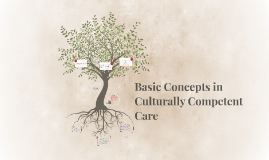
Transcript: Can seriously compromise a patient’s life. Treat each patient as an individual. Ask the patient’s family if his/her behavior is typical or abnormal for him/her. Don’t assume based on a stereotype. Stereotype is an end point No attempt made to see if individual fits the statement Can have negative results Always a mistake to do so based on appearance Cultural Competence Understanding ones own culture and biases; being sensitive toward other cultures and appreciating the differences between them. Inaccurate Stereotyping We are all ethnocentric at times. Stereotyping occurs within all ethnic groups. Learning the values and beliefs of other cultures. Applying the learned knowledge when interacting with the public. Cultural competence can improve patient satisfaction, clinical outcomes and cost efficiency. CALL-What do you CALL your problem? Patient’s perception of the problem What do you think is wrong? CAUSE-What do you think CAUSED your problem? Reveals the patient’s beliefs regarding source of the problem. Generalization COPE-How do you cope w/ condition? What have you done to make it better? Who has the pt. seen? What alternate treatments have been tried? CONCERNS-What CONCERNS do you have? How serious? Potential complications Does it interfere with your life or ability to function? Also ask about CONCERNS in regard to treatment of the problem. The 4 C’s of Culture Ethnocentrism Cultural Relativism Attitudes Other cultures do things differently than my culture does, but all are equally valid. Strives to understand the behavior in its cultural context. Biases-Be aware of Your Own Generalization is a starting point. Indicates common trends. Further information is needed to ascertained if the statement is appropriate in a specific situation. Basic Concepts in Culturally Competent Care Ethnicity Race Religion Disability Age Weight Gender Sexual Orientation Height Stereotype vs. Generalization My culture’s way of doing things is the right and natural way. All others are inferior, unnatural and even barbaric!